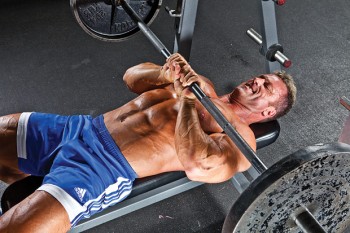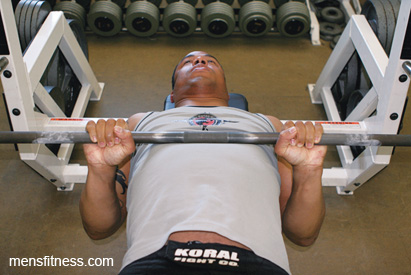I’m a total Debbie Downer….
Last time I was all like, “you shouldn’t do these stupid things”
and folks were all like, “But I like to do those….so what should I do instead?”
.….actually, they were like, “YOU SUCK, azzhole”…
but really that’s an everyday thing and doesn’t fit the narrative or this blog….any way.
I really hate when people point out what’s wrong or point out a problem and NEVER give a possible solution.
That’s not productive.
So, in the name of productivity here are substitutes for the Exercises that are Hurting You.
Parallel Bar Dip vs. Bench Dip:
If you have shoulder issues dips probably are not a good choice for you.
That said, this variation is MUCH better than the ones done on the edge of the bench.
Why?
These put the hands in line with the body, not behind, so the body can move “between” the shoulders as the elbows move back.
Yes, there is motion at the humerus and scapula (upper arm and shoulder blades) but it’s much less than in the bench version and more importantly you can grip crush the bars.
Crushing the bars will fire the rotator cuff and help keep the humerus centered and the shoulder safe.
Key Points:
- Elbows should be able to travel near the body, not too much flare.
- Control the depth, don’t get too low and cause pain (this is very individual)
- Grip hard the whole time.
- Forward lean at the torso is fine.
Close Grip bench Press vs Triceps Extensions:
Closer grip means less chest stretch= more triceps involvement= Bigger Triceps
Without the pain that extensions cause.
Basically, in the Close Grip Bench Press the triceps tendon(s) are not stretched the way they are in extensions.
While some of the gym Bro’s think close grip means hands almost together…..that’s kinda stupid.
Most people consider a close grip to be thumbs on the smooth part of the bar.
Any closer and your going to have to start flaring the elbows away from the side of the body, stretching the triceps tendons and putting them at the SAME EXACT RISK that you do with extensions.
The whole point of using the bench is to keep the elbows/ triceps in an advantages position.
Key Points:
- Same set up as any bench press: Shoulders tight, hips locked.
- Grip bar with thumbs on or next to smooth part of the bar.
- Don’t flare elbows (or flare only slightly) try to keep the elbows “under” the bar.
- Keep the forearms vertical or just slightly angled toward the head at the bottom.
Shoulder Raise in the Scapular Plane vs Empty Can:
You could really use any shoulder raise and it would be better than the Empty Can.
Shoulder raises in the plane of the scapula (scaption) tend to be a little easier on the shoulders and better for those with shoulder issues because there is less of a chance of shoulder impingement.
Where as the empty can is pulling the head of the humerus out of the joint, scaption exercises strengthen the rotator cuff without pulling the upper arm bone (humerus) out of alignment, instead the head of the humerus stays centered in the shoulder joint.
Key Points:
- Keep the shoulders down through the movement. DO NOT SHRUG THE SHOULDERS….
- Raise the arms in a “V” or 45 degree angle (from the torso midline).
- Don’t raise the arms higher than the shoulders.
- Stay smooth: Don’t swing or lean back.
Front Squat vs Leg Extensions:
Leg extensions suck….
Front Squats don’t, well they do and if you’ve done them you understand how and why, but not in a “these will hurt you type of way”.
Because the bar is supported on the front of the shoulders (clavicles) the torso is more upright (than a traditional back squat) which leads to more of an up and down squat versus the more back and down then up back squat.
This “up and down” movement of the Front Squat leads to more anterior translation of the Tibia i.e. forward movement of the knee.
Since, “what’s stretched is what’s activated”, we get more quad stretch (from the knee moving forward) and more quad recruitment (at the same weight) as in a back squat, hence quad development.
That said, you should still keep the “load” of the Front Squat in the heels and the hips not in the balls and toes of the feet.
FYI: if you have knee problems full range of motion front squats are probably NOT for you because of the tibial shear.
Key Points:
- The bar should “choke you out”.
- Elbows up.
- Chest (t-shirt logo) up. NOT low back over-arched…think: chest up.
- Weight in the heels the whole time.
- Push the hips back first.
- Knees in line over toes.
- Sit “between” the knees not back (too far).
TRX Sprinters Start vs Leg Extensions:
This is another great Quad dominant exercise.
The set up is a little awkward at first but you’ll get the hang of it pretty quickly.
Again, if you have knee pain, this isn’t for you. If you deal with cranky knees you probably don’t need anything that is Quad dominant.
Instead you should focus on hip dominant exercises and training with a vertical shin. Get strong with hip dominant exercises and you’ll get plenty of quad development along the way.
Key Points:
- Stay in a “tight” straight line, don’t round over or sway the hips.
- Drive the ball of the front foot into the ground.
- Bring the hip over the top, don’t drive the knee forward.
Backwards Sled Drags vs Leg Extensions:
These will make your Quads
BURN LIKE FIRE!
Best thing about these is that they are also relatively easy on the knees and can be done by most people with knee pain.
Why?
Not a lot of Tibial shear.
Just remember to “sit tall in the chair”.
Keep a good angle of hip flexion and try to stay tall not to lean back.
Key Points:
- Stay “in the chair”.
- Stay tight through the torso.
- Toe off hard.
- Smooth counts, don’t get “jerky”.
- Let the legs do the work, don’t pull with upper body.
Good Morning vs Low Back Machine:
Speaking of hip dominant exercises, this is one of the best.
While this exercise WILL strengthen your lower back, it’s NOT a lower back exercise.
Remember, the spinal errectors (low back muscles) are meant to help keep the torso upright.
These are mostly about resisting motion (flexion/ extension) NOT creating motion.
Even though they do create spinal extension when needed.
This exercise is all about soft knees, tight core and upper back and pushing the hips BACK..
Just before the point at which you’ll lose the arch in either the upper or lower back, or you feel like you’ll start to squat down is the end range of motion.
DO NOT GO TO THE POINT WHERE YOU ACTUALLY LOSE AN ARCH OR SQUAT DOWN….
From here, stay tight and drive the hips forward until you are standing tall at the top.
Movement from the hips, not the back.
The Alignment between the ear and hip should NOT CHANGE during the entire movement. The alignment between the hip and knee should.
Key Points:
- Upper and lower back arched and “locked in”.
- Soft knees.
- Push the hips back, don’t squat.
- Vertical or near vertical shins.
- Push the hips forward until standing tall.






